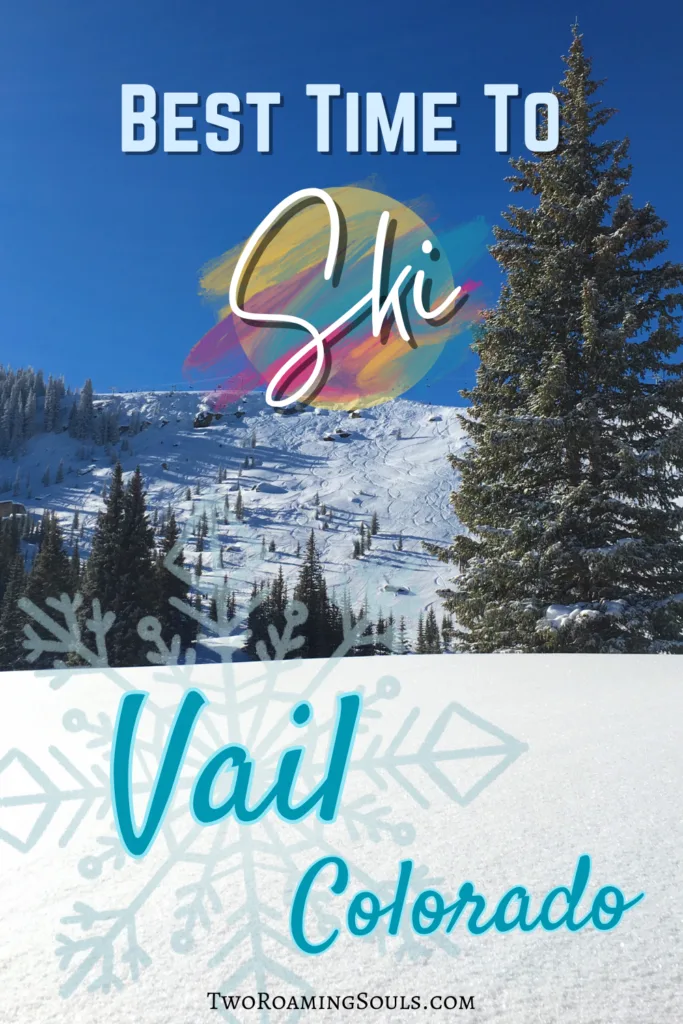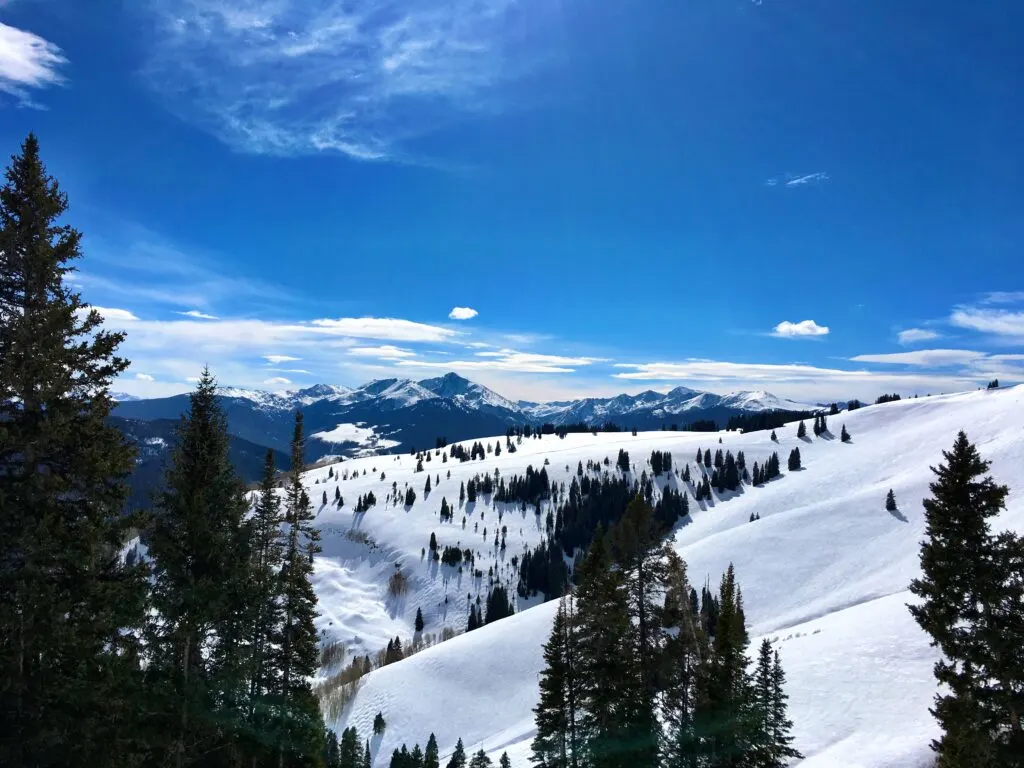
Are you curious what is the best time to ski Vail Ski Resort?
Emily and I have lived in the Vail Valley for many years. And as locals, we experienced Vail in all types of weather, conditions, and seasons.
Vail Ski Resort in Vail, Colorado is one of the largest and most impressive ski resorts in North America. Vail is famous for its “Legendary Back Bowls” that provide skiers with around 3,000 acres of wide open terrain to enjoy. And the rest of the resort adds on another 2,000 acres of skiable terrain.
So there really is something for everyone to enjoy.
While there isn’t always a definitive best time to ski Vail that applies to every type of skier, I can help you decide what time of year is best for you.
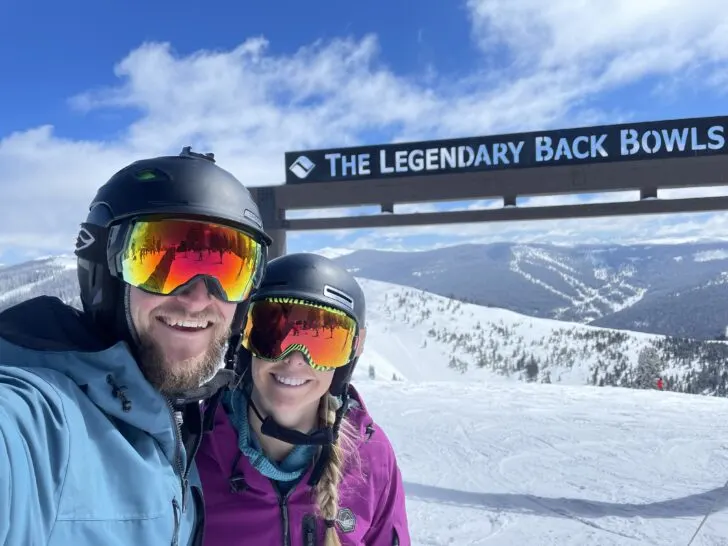
If you just want the quick answer, I will always preach that the best time to ski Vail is in March.
This is especially true for beginner and intermediate skiers who are just looking to have a good time, and are less concerned about snow conditions. The longer days and healthy snowpack in March almost guarantee a good time skiing the Rocky Mountains. Plus, you have more daylight to enjoy the Après scene in Vail.
It’s likely that you encounter sunny spring days when the vibes and energy on the mountain are unbeatable. And yet, dreamy powder days are still possible if it times up with a big spring snowstorm.
But the answer might be more nuanced for you depending on the type of skier or snowboarder you are.
Keep in mind that Mother Nature works in mysterious ways. So something that is true of one winter is not guaranteed to be the same the following winter.
When Is Vail Ski Resort Open?
Over the past 10 years, Vail Ski Resort has usually been open from November to April.
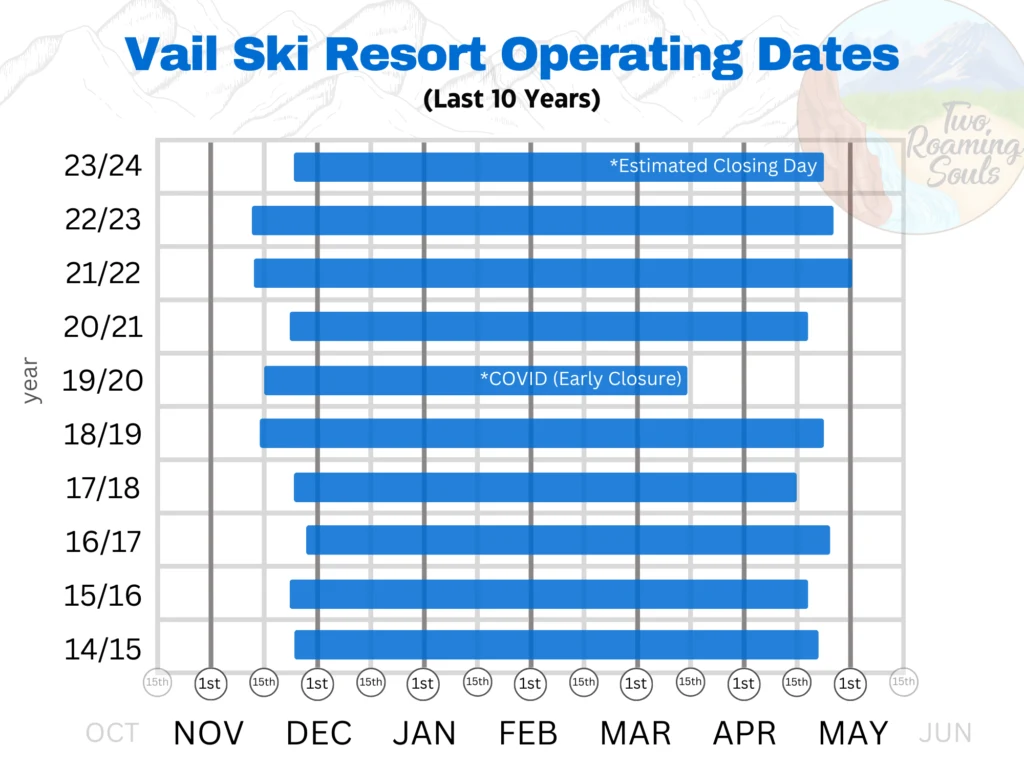
Vail Opening Day is usually around mid to late November. And Vail Closing Day is usually around mid to late April.
In 2020, Vail closed March 14th, but that was due to COVID-19 and not the snow conditions.
The Busiest (And Most Expensive) Times To Visit Vail
Tourist visitation at Vail varies greatly throughout the winter season. But luckily, busy tourist periods are very predictable and easy to avoid if you have the flexibility.
By far the most busy times to visit Vail Resort are Christmas break, President’s Day Weekend, and March Spring Break.
Many families and individuals use the time off from work or school to plan a ski vacation. If you have the flexibility to avoid these times, I highly recommend it.
These peak periods bring long lift lines and more expensive prices for accommodation and ski equipment rentals.
Many locals basically refuse to ski during these times to avoid the madness. (Or the simply can’t ski because their Epic Pass has blackout dates).
Early Season (November – December)
The early part of the season is the worst time to ski at Vail. Early-season snow conditions typically only allow select runs on the frontside to be open (i.e. no Back Bowls or Blue Sky Basin). In November, expect only limited runs in Vail Village, Lionshead, and Mid-Vail to be open.
And often those few open runs are supported heavily by man-made snow.
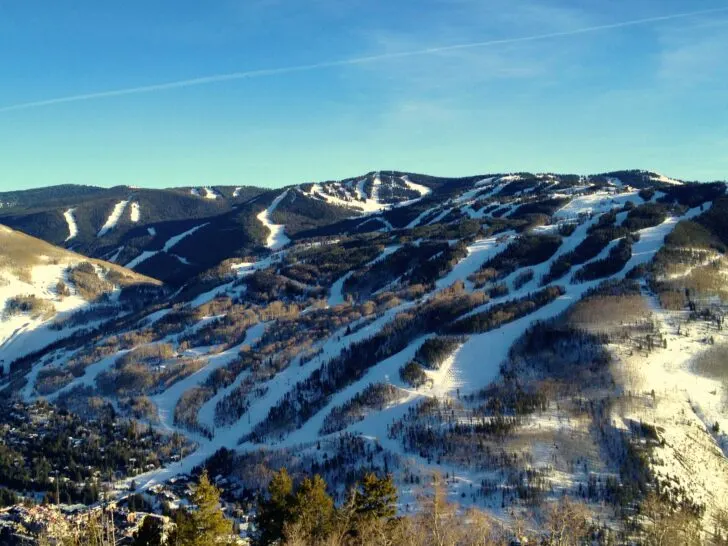
Additionally, sometimes Vail only opens upper chair lifts for skiing and requires skiers to upload and download Gondola One in Vail Village or the Eagle Bahn Gondola in Lionshead. That is, you cannot ski all the way down to the base areas.
While December does historically experience high snowfall totals, the base depth and early conditions can still limit the resort.
Depending on how much early season snow has fallen, the back bowls and Blue Sky Basin may or may not be open by Christmas. And if back bowls and tree runs do open, they usually don’t have great snow coverage, resulting in many exposed hazards like rocks and stumps. Not a great time for advanced skiers who want to “shred the gnar”.
And to make matters worse, Christmas to New Years is one of the busiest times of the entire season. Huge crowds consolidated onto limited skiable terrain make Christmas break potentially the worst time to ski all year.
Huge crowds with nowhere to disperse is a terrible combination.
And this time of year also has the shortest days of the year.
All that being said, you can still have a good time skiing Vail in early-season. Especially if Mother Nature cooperates or you really only care about skiing frontside groomed runs.
Mid Season (January – February)
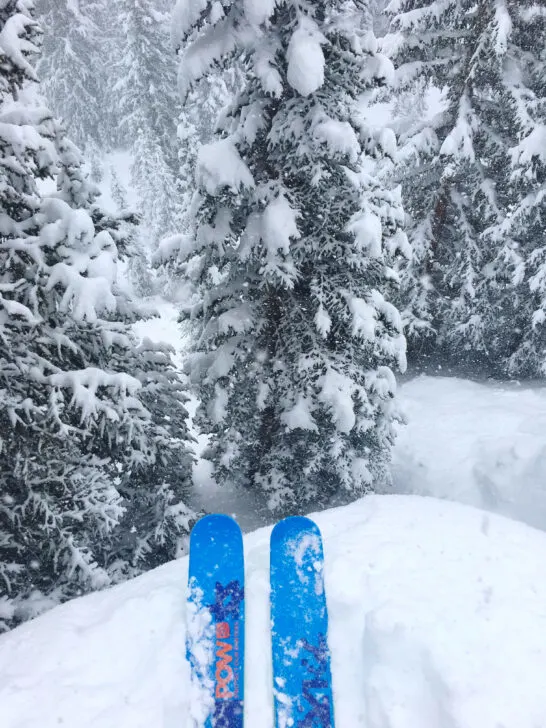
Mid-Season conditions like January and February are generally a great time to ski Vail. January and February are historically two of the snowiest months of the year, and don’t suffer from the early-season issues that plague December.
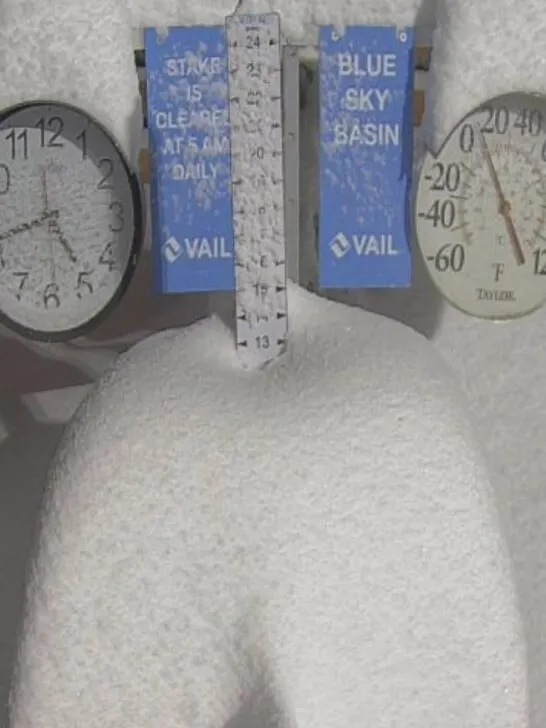
By this time the entire resort is usually open after experiencing plenty of inches of snow.
For skiers excited to experience Vail to the fullest, you should have no problems exploring every part of the resort, from Game Creek Bowl all the way to Blue Sky Basin.
More advanced skiers can finally begin to ski steeper terrain without worrying as much about thin coverage.
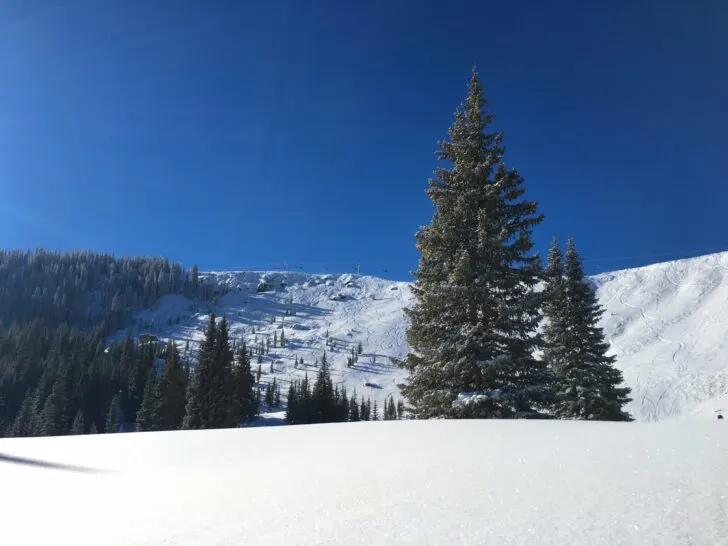
However, this period usually has the coldest temperatures of the ski season. Hardcore skiers may appreciate how cold temperatures help maintain good powder conditions.
But ‘fair weather’ skiers may find the cold weather unfavorable. Granted, the dry cold of Colorado is not nearly as bad as the wet cold in other parts of the country.
The two busiest times to avoid during Mid-Season are the long weekends of President’s Day Weekend in February, and to a lesser extent Martin Luther King Jr Weekend in January.
These holiday weekends can feel especially busy because everyone visiting is condensed into just 3 days. And again, expect a boost in prices for accommodation and ski rentals.
Spring Skiing (March & April)
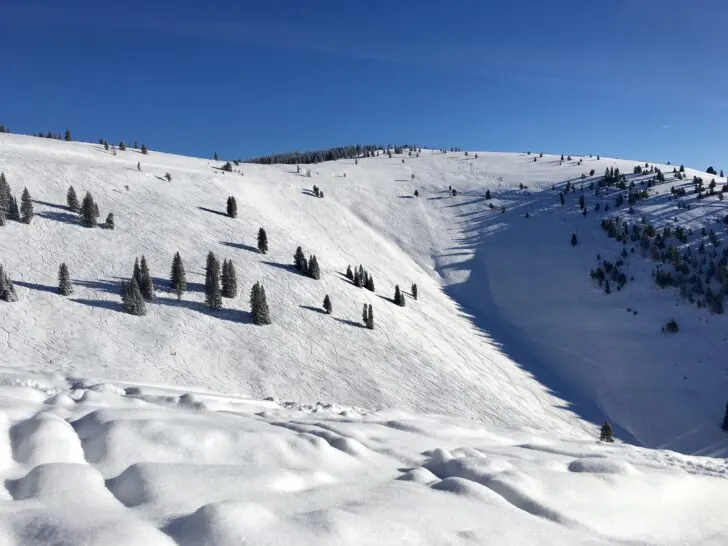
Finally, (in my opinion) the best time to ski Vail is in March. But I’m not alone, most other ski town locals agree that March is the best.
Positives Of Spring Skiing In Vail
Spring brings long sunny days and still the occasional big snowstorm.
By this time in the season, the snowpack is healthy and the entire resort is fully open and skiing well.
The warm sunny days are just an amazing vibe. The mountain just feels more alive with energy and joy. People wear fun outfits like onesies and more.
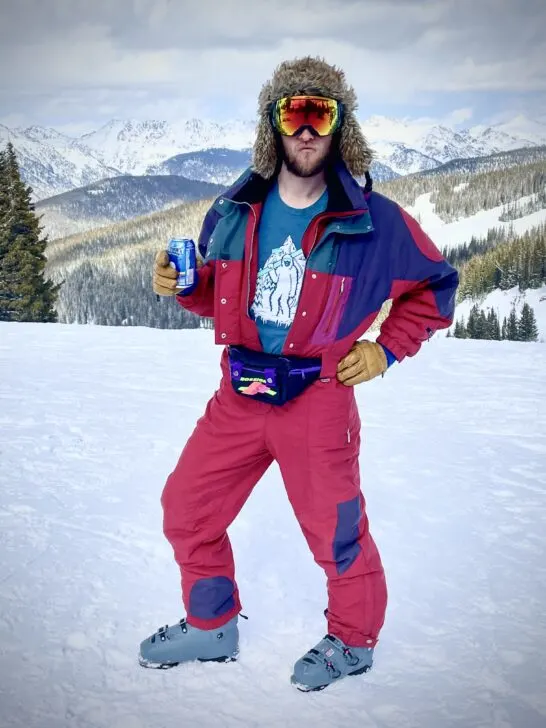
Folks are grillin’ and chillin’ at the decks at Belle’s Camp or Buffalo’s. And even if there hasn’t been any recent snowfall, the warmer temperatures tend to soften the snow by mid-morning.
Negatives Of Spring Skiing In Vail
However, there are some potential negatives of skiing in March. Spring Break brings another large influx of visitors to Vail. Typically, the busiest time is around the second week of March. However, March crowds are decently spread out over several weeks, as not everyone has the same week off.
This is noticeably nicer than the extremely condensed periods like President’s Day Weekend. When everyone is guaranteed to be there at the exact same time.
And also, Spring Break tends to bring more ‘fair weather skiers’ who are banking on sunny weather. So if you do get a wintery snowstorm, sometimes the mountain feels strangely empty on a March powder day.
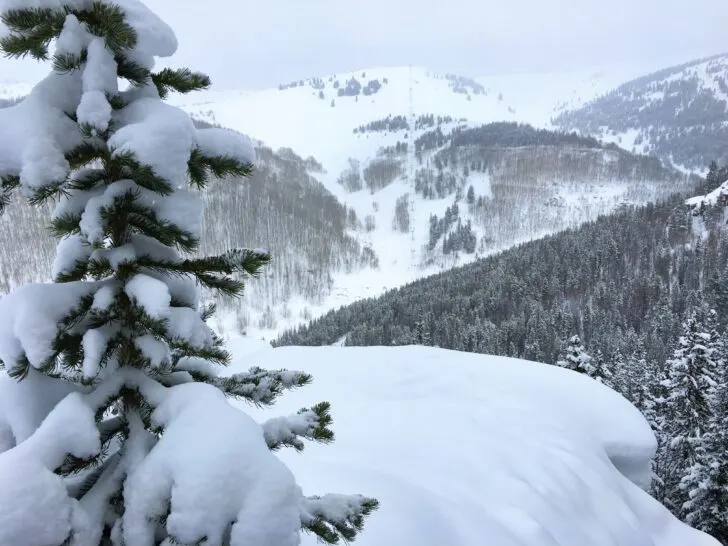
But spring skiing does suffer from frequent freeze-thaw cycles. So that beautiful soft slush from the day before often turns to bulletproof ice by the next morning. So the concept of “letting the day warm up” is often a common strategy of spring skiing. But that just gives you a little more time to recover from the bar the night before.
The worst days to watch out for are the cold cloudy day that comes right after a warm sunny day. In this case, you probably want to stick to the frontside (north-facing) slopes.
Another potential negative of spring skiing is that some people really dislike skiing on slushy snow. It can be kind of sticky and slow. Personally, I don’t mind ripping up some soft slush, but have certainly heard other people complain about it.
And if we get into a really warm weather pattern, Vail may melt a little too fast, exposing rocks and dirt patches. However, this isn’t usually a huge issue until April.
Skiing in April is often great for many of the same reasons that March is great. But even warmer temperatures approaching the shoulder seasons can lead to poor snow coverage and begin to close terrain. So the entire resort may not be open if you visit in April.
And much like the beginning of the season, late season skiing in Vail might require uploading and downloading a Gondola to reach the upper terrain.
What Lift Tickets Do You Need To Ski Vail?
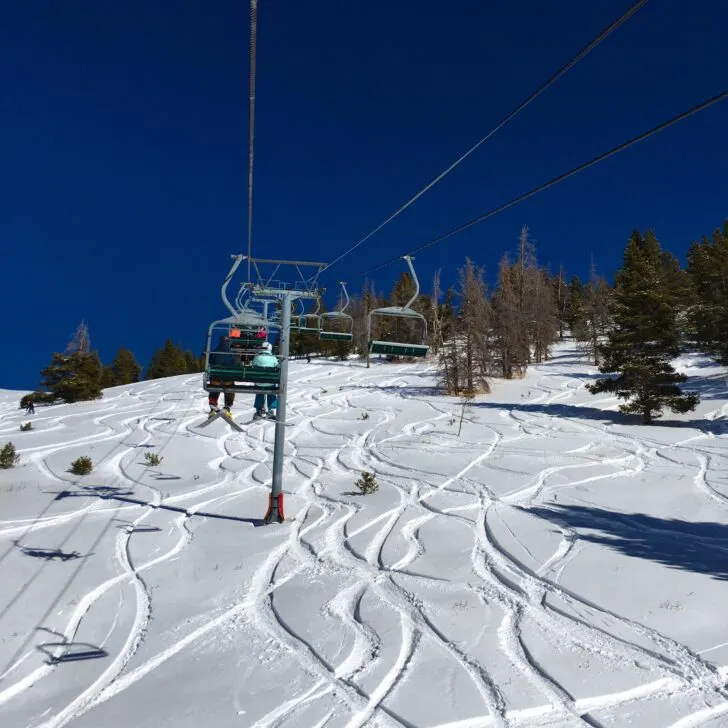
Lift tickets to ski at Vail take the form of the Epic Pass (seasonal) or single-day and multi-day lift tickets. There are usually savings associated with purchasing passes in advance.
Read our guide on how to save money on a trip to Vail or Beaver Creek.
What Are The Best Airports to Visit Vail Colorado
Getting to Vail by airplane can be done by either Eagle County Regional Airport or Denver International Airport.
The Denver Airport (DIA) has plenty of flight options but requires a 2-hour drive to Vail (in optimal conditions). However, this stretch of highway on I-70 is often far from optimal driving conditions in the winter. High-elevation mountain passes, frequent snow, and Denver crowds often result in traffic, accidents, and closures. So this 2-hour drive can easily turn into a 3-5 hour drive, sometimes even more. So visiting via Denver Airport does introduce a bit more liability to reaching Vail on schedule.
Things like shuttles, buses, and private taxis are all good transportation options for getting from Denver to Vail without a car.
The much smaller Eagle Airport (EGE) is usually more expensive but is only 30 minutes from Vail. And the road conditions are much less prone to weather-related closures, accidents, and traffic.
And once you reach Vail, there is a very convenient free bus service provided by the Town Of Vail. Or the paid ECO Bus is also helpful if you are staying “down valley” in places like Minturn, Eagle-Vail, Avon, Edwards, etc.
Conclusion | When Is The Best Time To Ski Vail
For most people, the best time to ski Vail is in March. Quite simply, it provides the highest likelihood of an enjoyable experience. And since visiting Vail is an expensive endeavor, you want to ensure that it is money well spent.
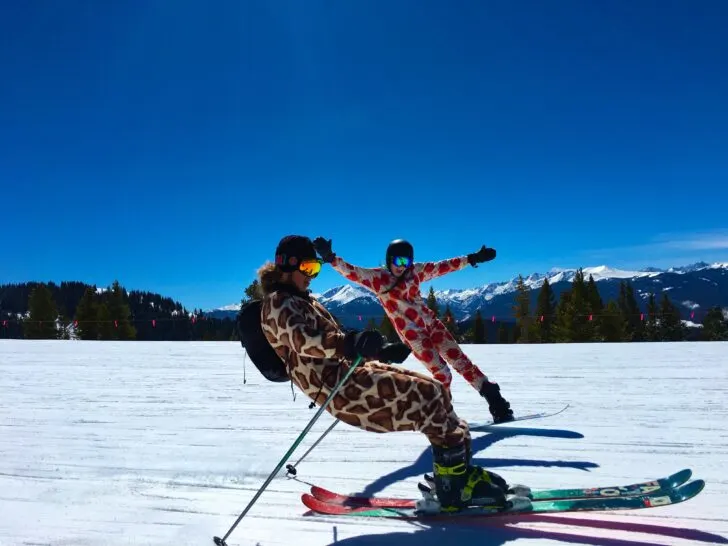
The longer sunny days create an atmosphere that fills the mountain with energy. In the late stage of the season, you typically don’t have to deal with limited terrain or thin snow coverage.
Skiers and snowboarders of all ability levels can have a great time during March. But beginners and intermediate skiers who don’t care as much about conditions will certainly appreciate the warmer weather and more sunshine.
If you are someone who is really chasing deep powder days at Vail, then the best time to visit is January and February. But it’s more of a gamble if there will be recent snowfall to deliver the goods. It’s certainly possible that it might just be cold with no new snow.
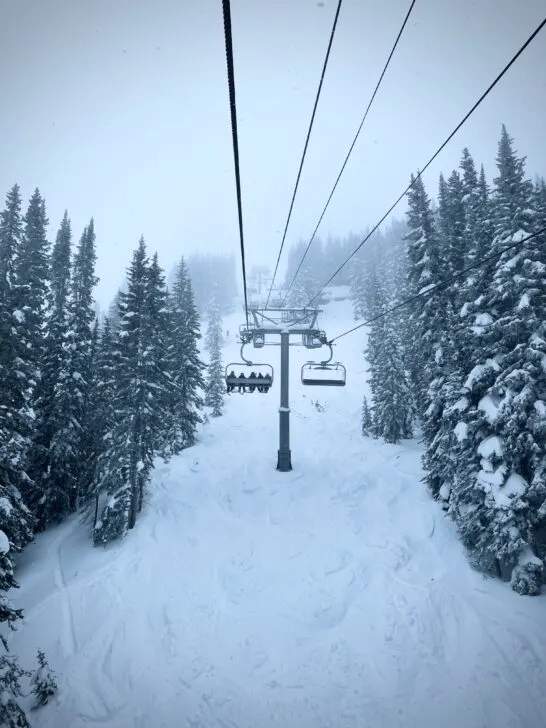
If at all possible, the best way to secure some deep powder skiing is to monitor weather forecasts and book a trip last minute.
And if you are traveling with non-skiers, or simply want a break from the ski resort, here are our favorite non-skiing things to do in Vail.
Save ‘The Best Time To Ski Vail’ For Later!
